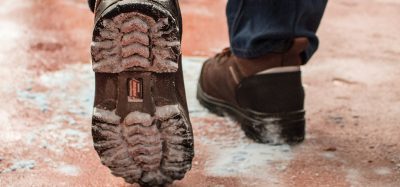Testing surfaces for SARS-CoV-2
- Like
- Digg
- Del
- Tumblr
- VKontakte
- Buffer
- Love This
- Odnoklassniki
- Meneame
- Blogger
- Amazon
- Yahoo Mail
- Gmail
- AOL
- Newsvine
- HackerNews
- Evernote
- MySpace
- Mail.ru
- Viadeo
- Line
- Comments
- Yummly
- SMS
- Viber
- Telegram
- Subscribe
- Skype
- Facebook Messenger
- Kakao
- LiveJournal
- Yammer
- Edgar
- Fintel
- Mix
- Instapaper
- Copy Link
Posted: 8 September 2020 | Merieux NutriSciences | No comments yet
Merieux Nutrisciences explains the benefit of introducing SARS-CoV-2 surface testing and why it is an important cog in any food hygiene programme.


I am sure you have heard the saying, “When you’re holding a hammer, everything looks like a nail”; sometimes companies like ours are accused of seeing everything in terms of analytical testing. However, our goal is to provide practical solutions to industry challenges in a holistic way, with testing as an important, but certainly not the sole, component of any solution.
Our customers’ challenges are more complex than ever before and require a credible response with scientific data to meet the obstacle at hand. So why launch SARS-CoV-2 surface testing now? What benefit will it bring to our customers?
Swabbing for SARS-CoV-2
Food has not been shown to be an infectious carrier for SARS-CoV-2, but food plants have suffered widely publicised problems during the COVID-19 pandemic so far. Employee


Whilst the ‘hammer’ is a crucial tool, Merieux Nutrisciences recognises the importance of the whole food safety toolbox
illnesses, shutdowns, loss of demand or elevated demand, and supply chain disruptions are among the list. We have looked at how we can support our customers and have offered a series of webinars, whitepapers, consulting and other virtual services.
Going a step further, we are now offering surface testing for the presence of SARS-CoV-2 RNA. Swab testing should be utilised as one step in a much bigger and more comprehensive approach. Specifically, once employee hygiene safety programmes are in place within a food plant, the surface testing can be used to validate and verify the effectiveness on a routine basis or as a follow-up to an employee illness incident. The surfaces to target would be high touch areas such as handrails, doorknobs, locker rooms, restrooms, etc. Testing food contact surfaces is not appropriate unless they are also high human touchpoints, which by definition, they should not be!
The act of swabbing for a virus itself is similar to other types of environmental monitoring that food plants currently perform, but there are differences to highlight. We will be providing swabbing kits upon request that include everything needed to start a programme.


So, what are some key drivers of success in swabbing programmes for SARS-CoV-2? Firstly, synthetic swabs are shown to be better for virus detection. Secondly, there are specific solutions used to preserve these swabs during transportation to the testing lab. The best solution is to utilise a ‘transport media’ that does a couple of things. To start with, we want to deactivate the virus to reduce the risk of exposure or infection in the logistics chain. Then we want to preserve the target, which in the case of the SARS-CoV-2 virus is its RNA (ribonucleic acid). We are putting this theory into practice by only accepting and testing our own swabs that are sent in our own transport media. This way we can be certain that what we test is not capable of making someone ill while preserving the analytical target.
Results are in – now what?
Results will be reported as negative or positive for the target RNA. If positive, the result does not mean what was detected is actually an infectious virus, but it does mean that the sanitation protocol used left viral RNA fragments on your high contact surface. Ideally, your sanitation protocol will disinfect the virus but would also remove any RNA from the surface.
The main practical outcome of testing is to verify the sanitation standard operating procedures are effective and demonstrate to employees and regulatory officials that your hygiene programme is sufficient. If the testing is positive, our consultants can assist with your sanitation protocols. While our ‘hammer’ (testing services) can be useful in building a strong and safe house, I will also gladly collaborate with those holding other tools to strengthen our future.
Highlights
- One component of a holistic solution
- Swabbing and transportation considerations
- A measure of sanitation effectiveness
For further information, visit: www.merieuxnutrisciences.com.








